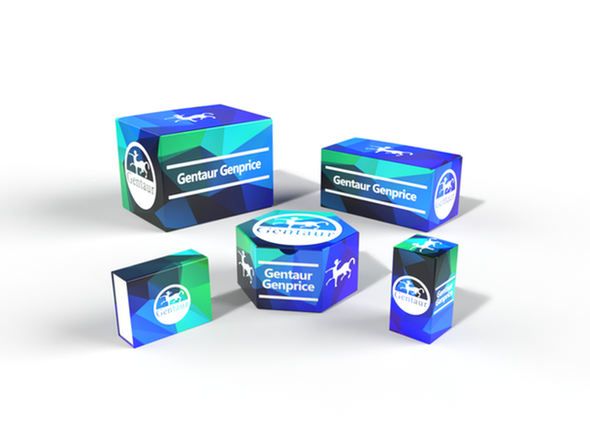749
Mouse C-X-C motif chemokine 13 (CXCL13) ELISA Kit | KTE71369
- SKU:
- 749-KTE71369
- Availability:
- Usually ships in 5 working days
Description
Mouse C-X-C motif chemokine 13 (CXCL13) ELISA Kit | KTE71369 | Gentaur UK, US & Europe Distribution
Application: This Mouse C-X-C motif chemokine 13 (CXCL13) ELISA Kit employs a two-site sandwich ELISA to quantitate CXCL13 in samples. An antibody specific for CXCL13 has been pre-coated onto a microplate. Standards and samples are pipetted into the wells and anyCXCL13 present is bound by the immobilized antibody. After removing any unbound substances, a biotin-conjugated antibody specific for CXCL13 is added to the wells. After washing, Streptavidin conjugated Horseradish Peroxidase (HRP) is added to the wells. Following a wash to remove any unbound avidin-enzyme reagent, a substrate solution is added to the wells and color develops in proportion to the amount of CXCL13 bound in the initial step. The color development is stopped and the intensity of the color is measured.
Detection Method: Colorimetric
Conjugate: N/A
Sample Type: Cell culture supernatants#Serum#Plasma#Other biological fluids
Assay Type: Multiple steps standard sandwich ELISA assay with a working time of 3-5 hours. It depends on the experience of the operation person.
Kit Component: • Mouse C-X-C motif chemokine 13 microplate
• Mouse C-X-C motif chemokine 13 standard
• Mouse C-X-C motif chemokine 13 detect antibody
• Streptavidin-HRP
• Standard diluent
• Assay buffer
• HRP substrate
• Stop solution
• Wash buffer
• Plate covers
Features & Benefits: Mouse C-X-C motif chemokine 13 (CXCL13) ELISA Kit has high sensitivity and excellent specificity for detection of Mouse CXCL13. No significant cross-reactivity or interference between Mouse CXCL13 and analogues was observed.
Calibration Range: Please inquire
Limit Of Detection: Please inquire
Usage Note: • Do not mix components from different kit lots or use reagents beyond the kit expiration date.
• Allow all reagents to warm to room temperature for at least 30 minutes before opening.
• Pre-rinse the pipet tip with reagent, use fresh pipet tips for each sample, standard and reagent to avoid contamination.
• Unused wells must be kept desiccated at 4 °C in the sealed bag provided.
• Mix Thoroughly is very important for the result. It is recommended using low frequency oscillator or slight hand shaking every 10 minutes.
• It is recommended that all samples and standards be assayed in duplicate or triplicate.
Storage Instruction: The unopened kit should be stored at 2 - 8°C. After opening, please store refer to protocols.
Shipping: Gel pack with blue ice.
Precaution The product listed herein is for research use only and is not intended for use in human or clinical diagnosis. Suggested applications of our products are not recommendations to use our products in violation of any patent or as a license. We cannot be responsible for patent infringements or other violations that may occur with the use of this product.
Background: B lymphocyte chemoattractant, independently cloned and named Angie, is an antimicrobial peptide and CXC chemokine strongly expressed in the follicles of the spleen, lymph nodes, and Peyer's patches. It preferentially promotes the migration of B lymphocytes (compared to T cells and macrophages), apparently by stimulating calcium influx into, and chemotaxis of, cells expressing Burkitt's lymphoma receptor 1 (BLR-1) . It may therefore function in the homing of B lymphocytes to follicles.
Alternative Names: CXCL13; ANGIE; ANGIE2; BCA-1; BCA1; BLC; BLR1L; SCYB13; B-cell chemoattractant; B-cell-attracting chemokine 1; B-cell-homing chemokine (ligand for Burkitt s lymphoma receptor-1) ; B-lymphocyte chemoattractant; c
Search name: CXCL13; ANGIE; ANGIE2; BCA-1; BCA1; BLC; BLR1L; SCYB13; B-cell chemoattractant; B-cell-attracting chemokine 1; B-cell-homing chemokine (ligand for Burkitt s lymphoma receptor-1) ; B-lymphocyte chemoattractant; c
Tag: CXCL13






